Lost in Time
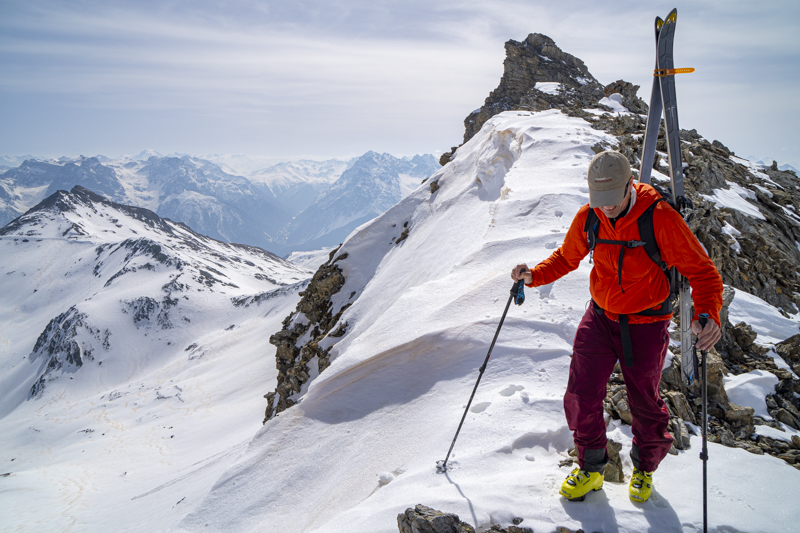

You may have heard of the Engadine Valley in Switzerland’s south-east corner. FL regulars who were paying attention might remember the ski tour I made there last winter, the Graubunden Haute Route, which I enjoyed so much I thought I’d go back.
Towards Engadine’s western end is St Moritz and to the east, Austria. With me so far? In between, it all gets a bit hazy for most people, though that’s where some of the best stuff lies.
Heading there by train from the north, just set your watch back 50 years as you pass through the Albula tunnel, to prepare yourself for the onward journey through a landscape from years gone by. You finally pass the distinctive castle-on-a-hill of Tarasp before reaching the town of Scuol – a relative metropolis around here with its population of almost 5,000.
Hop on a bus to the village of Vna – now you might as well throw your watch away – and start the skin, or in our case (late season and not much snow) walk, with skis on our shoulders, along the Val Sinestra to Zuort.
After a few calming kilometres, enjoying the afternoon sun and expansive views, you round a bend and dip down to a bridge over a river before the final metres to Hof Zuort, your home for the next few days – a very old farmhouse on a meadow, surrounded by lots of chickens, with obvious egg-laying-for-breakfast potential. Pause to take in the scene before climbing to the terrace to meet the substantial aproned figure of Not Pult (that’s his name, not ‘not’ his name) your host from central casting.
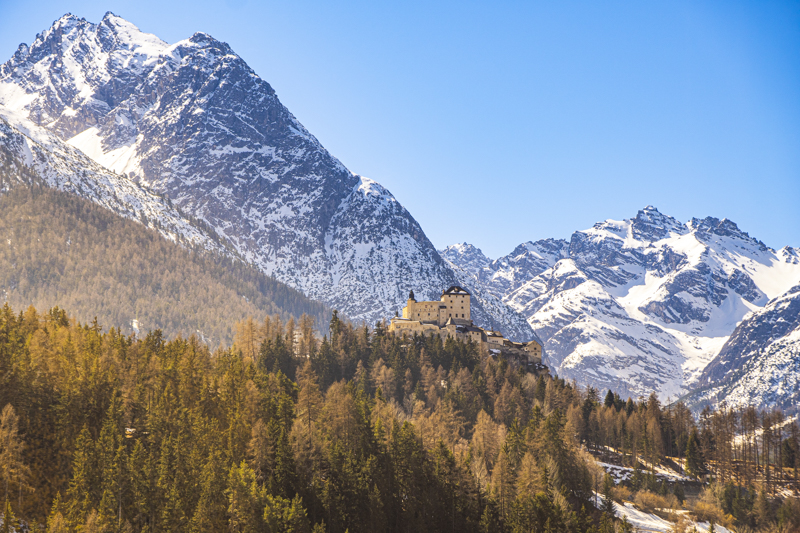
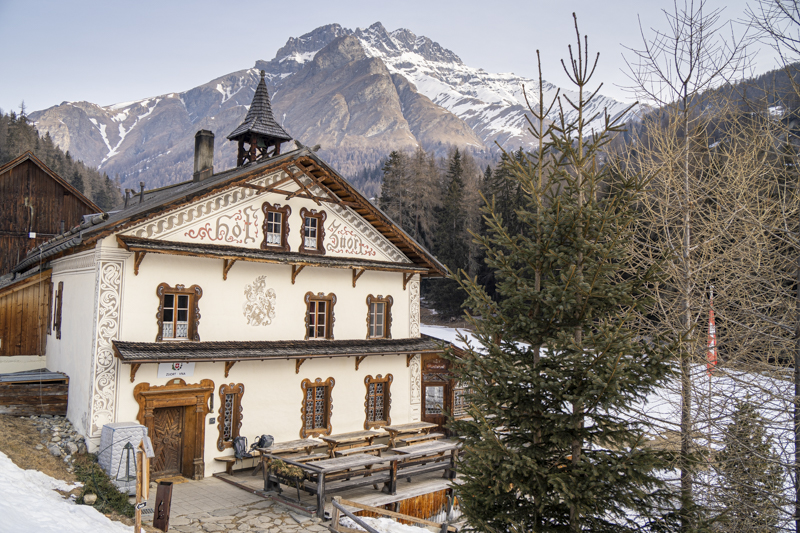
Hof Zuort is old in the 1482 sense of the word. They’ve done some work in the meantime, but the general effect is that you’ve time travelled several centuries in reverse. Zuort’s handful of spectacular, antique rooms come with a bathroom with proper hot water. With a gang of ski tourers, it’s the proper refuge experience, but without the smell and way cosier than your average mountain hut – the panelled restaurant is heated by a massive stone stove you can sit against while dining as it gently warms the rooms above.
All alone here in late season, as we are, we experience the kind of remoteness and silence you might never experience your whole life long, unless you happen to be on the first manned flight to Mars. Talking of which, the stargazing is pretty good too – there’s not a light for miles. Which – I know – doesn’t have much to do with skiing, other than the comforting knowledge after the efforts of the day that your sleep is unlikely to be disturbed by revellers, snowploughs or anything other than a cockerel.
But take a look at the map: Zuort is neatly encircled by 3,000m peaks traversed by nothing more than rough paths; the farmhouse is at 1,714m. Even with my maths, I can see that’s several perfect skin-and-ski-days, from the door. When you consider how recently ski touring became a pastime, you have to hand it to Zuort’s founding fathers for forward thinking.
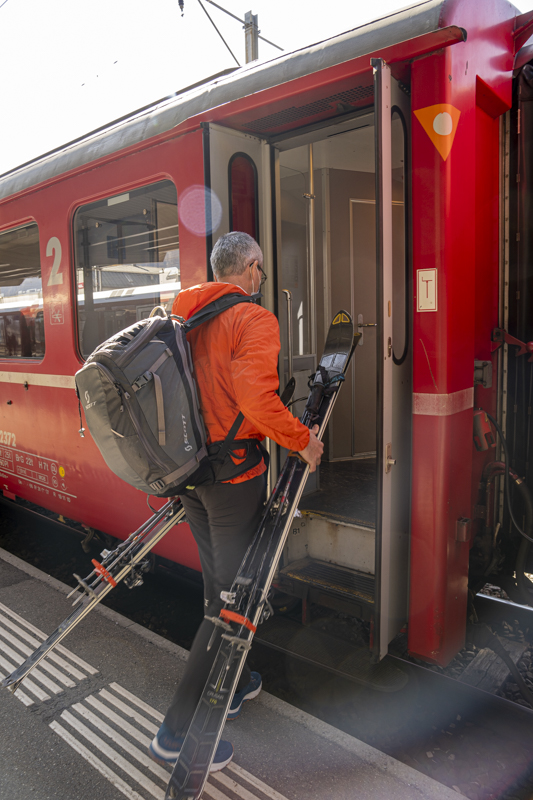
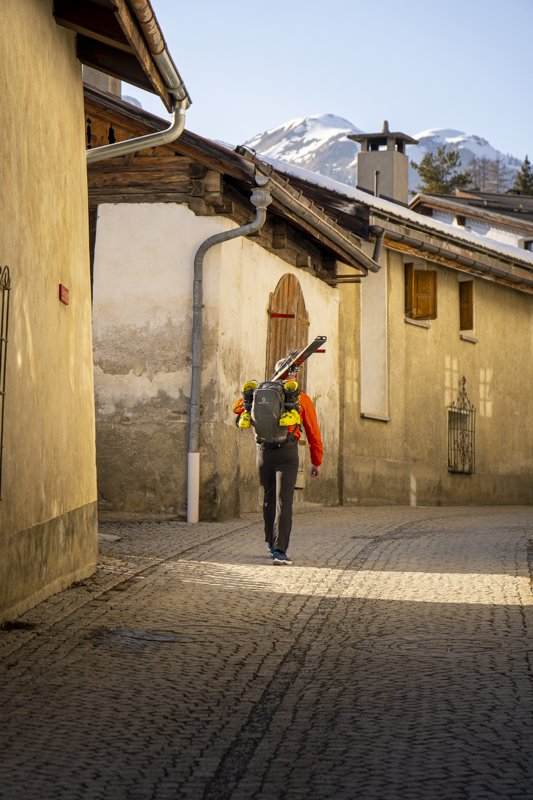
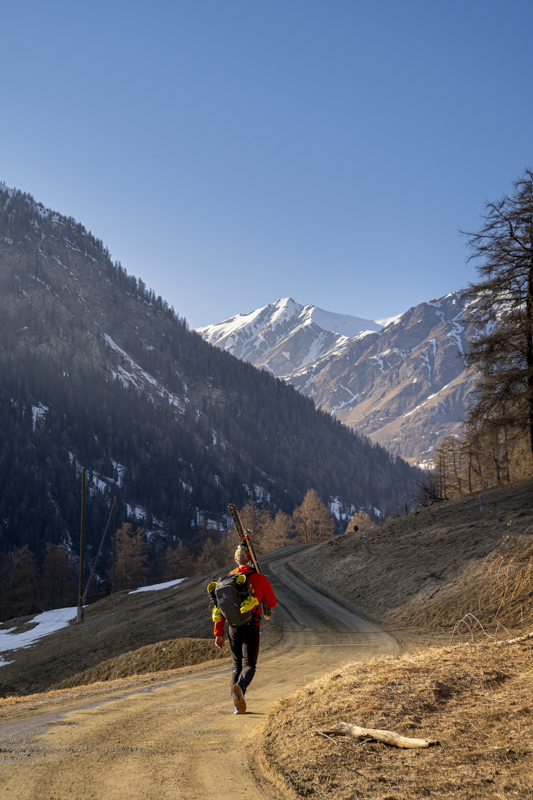
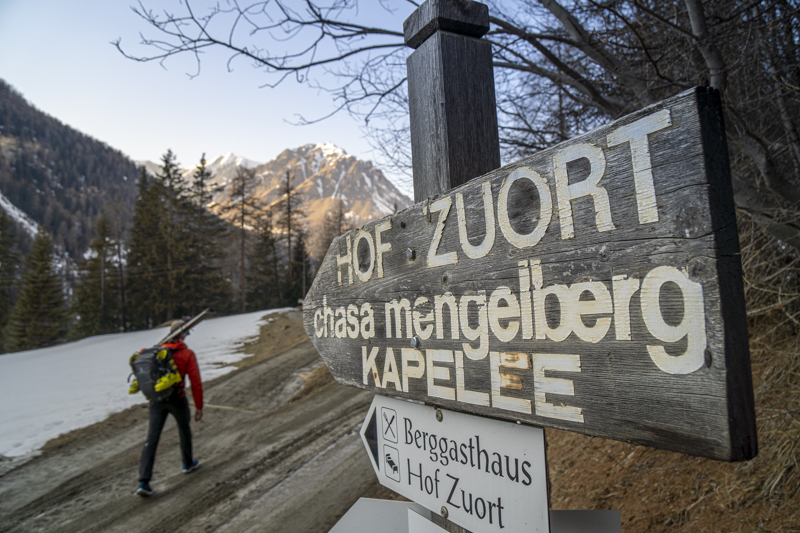
But there’s a time and a place for a lift as well. So we meet the next morning with Stouni, our guide, back in Scuol, from where a cable car by the train station accesses the domain of Scuol Motta Naluns. Before setting off, we get the low-down on the resort from a man named Andri Poo; it’s not just the villages and peaks around here which have funny names to English ears.
Mr Poo is a guide and engineer who now runs the ski lift company. He reassures us that the long-imagined lift link with Samnaun and Ischgl to the north east is not, nor will be, a thing. Good. It would wipe out some lovely touring terrain as well as creating another vast domain that people would struggle to traverse and return in a day. His motto is ‘schützen und nutzen’ (protect and use); in Scuol, that means upgrading existing infrastructure to make the best of the domain’s lovely 70kms of pistes rather than expanding into virgin territory. His priorities for now are the replacement of a 40-year-old restaurant at the top of the gondola for a cool 15 million francs and to replace the Champatsch T-bar with a chairlift.
Stouni’s plan for the day takes us up that very T-bar to reach a col at nearly 2,800m. We’re tackling the 3,178m Piz Tasna via his favourite route, which, he explains, is the hard way along a rocky ridge, traversing the Piz Nair. I’m not quite sure what we’ve done to deserve this – we’ve only just met the man – but he assures us it’s a great day out.
After a short ski and skin from the lift top, we stick skis on packs to head north up the ridge. Nothing extreme, just the usual scramble on loose rock, which occasionally makes you feel your footwear is about 20 sizes too big. The season has been short of snow right across the Alps and up here a combination of wind and sun has left a lot of the upper mountain bare. You can see why Stouni likes the route: the views are wonderful, and the drop down to our right is impressive.
Of course, there’s always a crux, in this case where the ridge drops down an inclined rock step covered in loose snow. It looks ideal for skidding off, then plummeting into oblivion, but Stouni ambles down and positions himself over the abyss. While holding onto not much he helps us find footholds, much as you would with a three-year-old on a climbing frame. Sometimes it’s nice to be patronised.
All of that is sufficiently unnerving that I can’t decide if Stouni’s nod towards a couloir just beyond is a joke – he hasn’t even properly seen us ski yet. We can’t see much of it from the top, which suggests it’s steep-ish, and besides, the drop-in looks a bit sketchy and perfect for getting thrown into the back seat before ramming into the side and rocketing off backwards. That sort of thing never ends well, so we decline: after all we haven’t been to the top of Piz Tasna yet, nor seen down the vestigial glacier of its north face – something I’m suddenly very keen to do.
But as we head on towards the Tasna summit ridge, we realise the day is warming so fast we need to be skiing straight down, even if the summit is now only 100 vertical metres above us. While the snow is fine up here, the final section to Zuort, well over 1,000m below, will be tricky if we delay, so we click into our skis to slide gingerly off the ridge – not as steep as that couloir, but still impressive, for the first big pitch down the grippy snow of Tasna’s north east face. It eases into a series of long, smooth, made for spring-skiing pitches, which soften progressively. For a magical majority of the time, it’s perfect – who needs powder, or grooming, when the freeze-thaw can leave it like this under your skis?
Then comes a river valley, normally a roller coaster of pillows and snow bridges, but under current conditions a slightly sketchy maze where you have to guess as far ahead as possible to avoid being marooned. Bringing up the rear, and with quite a lot more kilos in my ‘pack’ than either Stouni or Penny, every snow bridge collapses beneath me as I cross it. I’m feeling like James Bond as I leap the rushing waters, until it is pointed out I look more like Billy Bunter. No apfelstrudel for me, back at base.
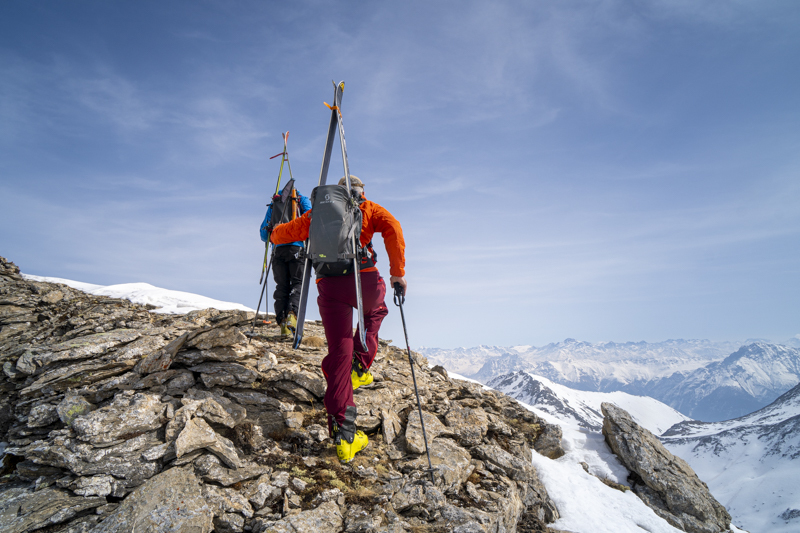
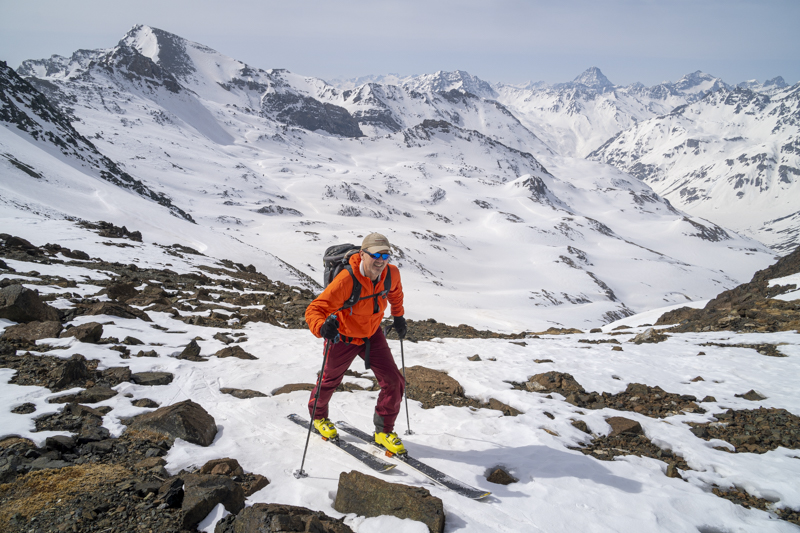
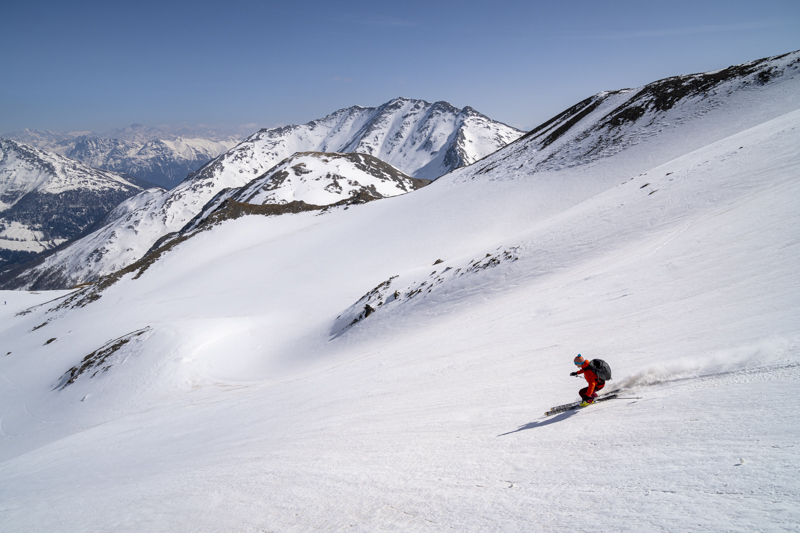
The next morning we’re in a Sunday stroll mood as we set off from the Hof, spotting groups of chamois on the slopes high above us, sunning themselves.
With good snow cover we’d have a few options: to the east is the very obvious 2,800m Piz Arina, with its big bowl and classic south face of wide-open skiing, though this year the crocuses will already be poking through.
North of that is the Muttler, whose final metres to the 3,296m summit come with blue dots on the map, meaning ‘sporting’ and suiting neither our mood nor the conditions, though a traverse from south to north, to exit via Val Maisas to the resort of Samnaun, looks like one to come back for. Upriver along the Val Choglias also looks tempting, to climb the north side of Piz Mottana.
But since there’s no-one around, and no competing for tracks on the way up or down, we opt for the most local choice, just south west of Zuort, to an unnamed 2,783m peak connected by a ridge to the Piz Spadla, which we hope will give a straightforward climb in time for a descent on buttery, sun-warmed spring snow.
Despite the spring-like piebald snow-cover, there’s a chilly breeze on our backs and nothing seems to be softening as we climb above the upper larch forested slopes. They’re looking lovely for the way down – perfectly spaced – but it would be nice if we get to ski them without needing edges.
Our summit is reached by stringing together patches of snow, crossing shaley rock, in and out of skis, before abandoning them for the final scramble. Yesterday, we chose the rock route; today there is no option, though it’s tame by comparison – simply a walk you couldn’t fall off if you tried. The initial descent – a Scottish slalom but without the heather – is fine though still crisp, so a few turns down and out of the wind, we picnic to wait for the transformation from ice to butter.
But some days it’s just not to be. We settle for imagining smooth turns on what is still a lovely descent, relieved that at least the river section should be weight bearing. But weirdly, that bit turns out to be just as rotten as the previous day, and trickier to navigate due to the snow bridges I wrecked the first time round. Sometimes you just can’t win. Might as well have that apfelstrudel after all, and maybe an Engadiner Nusstorte, with extra cream.
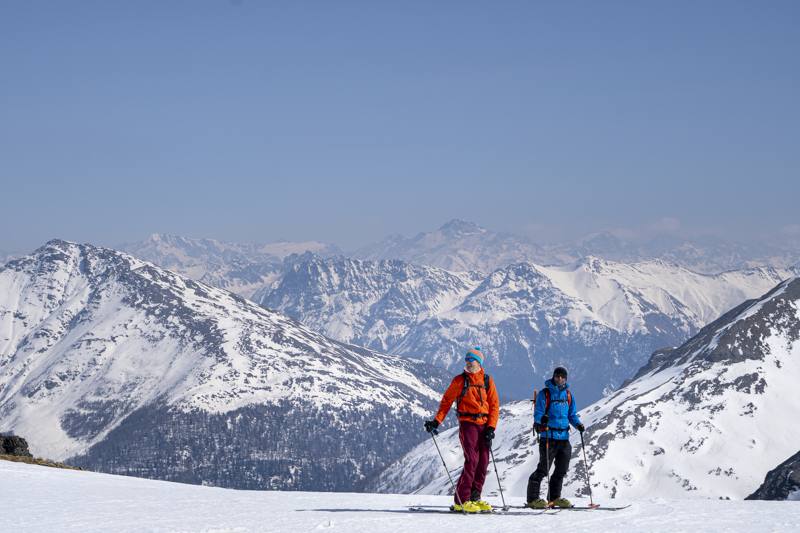
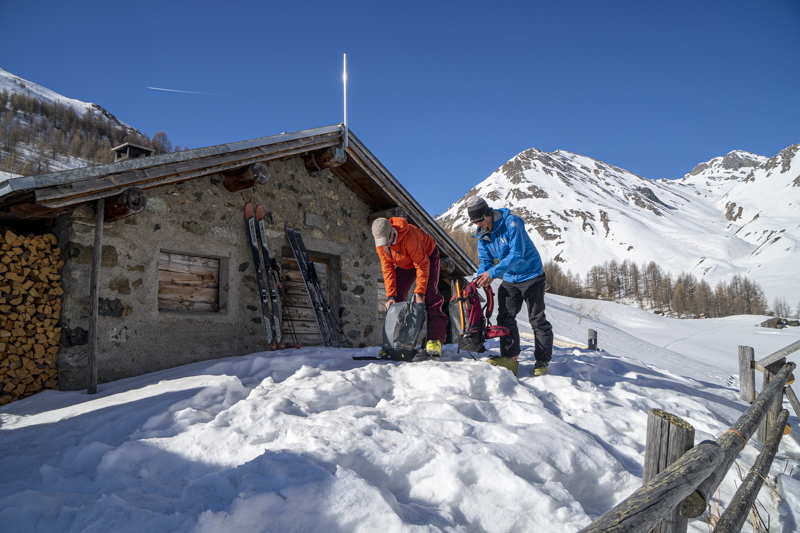

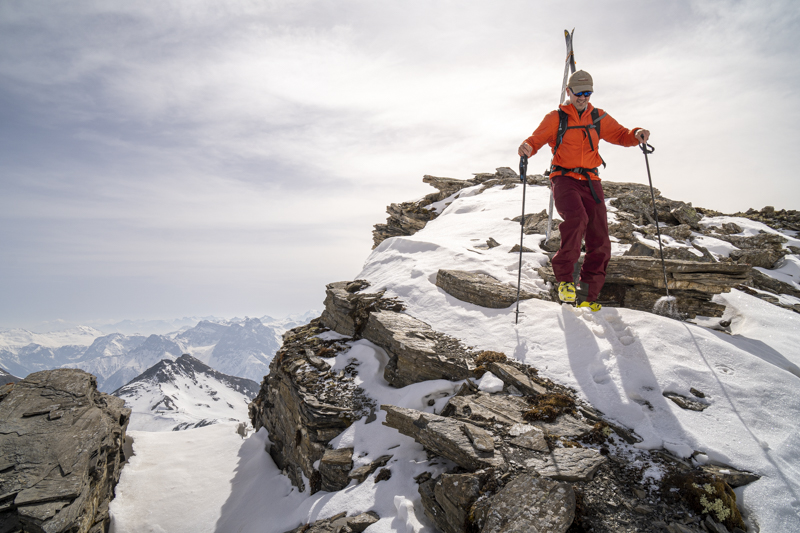
Hof Zuort offers doubles (shared bathroom) from CHF 180 (£157), plus an additional CHF 35 (£30) for half-board.
Guide Marco ‘Stouni’ Steinemann offers a day rate of CHF200 (£174) per person for a group of four.
Valle Maira, Italy Winter or summer, this valley in the Maritime Alps – well on the way to the Mediterranean – is a cracker. No resorts, just ancient villages, with a handful of places to stay. The terrain feels endless and apart from the very obvious rocky fins that define the region – and which are quite clearly not skiable – much of the rest of the landscape looks to have been built for a bit of sliding on snow, followed by refuelling in the comfort of a converted village school at the head of the valley in Chiappera. La Scuola di Chiappera
NARVIC, NORWAY Norway’s ski touring potential is so limitless it can be hard to know where to start. So do yourself a favour and just get on with it: topography and snow cover combine to make day touring from a comfy base the obvious option. The old fjord-side fishing buildings of Trollviken Lodge, near Narvik, are ideal – you can stay with a gang, self-catering or full-board. The only question is how long for. With either a boat or a van, you could spend most of the rest of your life skiing every day of spring and never cover the same ground twice. Trollviken Lodge
QUEYRAS, FRANCE This natural park in the southern French Alps is a haven to wildlife and ski tourists. A couple of villages have a few lifts but other than that, it’s a rolling landscape of bigger-than-they-look mountains. Ancient hamlets have been handily spaced for a skin-and-ski moving on adventure, but once you’re installed in the Maison de Gaudissard you might just find yourself thinking that there’s plenty to do from the door, and why not just stay the week? Visit Gaudissard